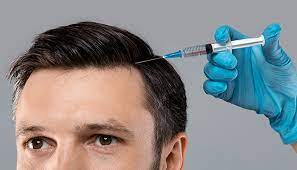Side Effects of PRP

Overview:
Bone tissue injuries require a lot of time to heal. Soft tissue injury might take several stages for healing. It is widely used as sports medicine. Hence, it involves making the most of the initial healing stages for instance: inflammation and an increase in cells. Side Effects of PRP.
PRP in Islamabad. Bone and soft tissue injuries heal in many stages. One of the most exciting areas of research in orthopedic surgery and sports medicine involves making the most of the initial healing stages: inflammation and an increase in cells, or cell proliferation.
What is PRP:
PRP stands for platelet-rich plasma. It is produced from a person’s own blood. PRP circulates through the blood. It is very crucial for blood clotting. While Platelets and plasma contain some factors that are essential for the healing process. These factors may include multiplication, specialization, and cell recruitment.
A blood sample is drawn from the patient. This blood is put into a centrifuge. This tool is used to spin the blood at high speed. Due to high rotation blood divides into separate components. Platelet-rich plasma can easily be collected. As a result, PRP is delivered to an injured area of bone or soft tissue. For instance, tendon or ligament.
PRP Treatment:
Many basic science studies in animal models suggest that PRP may improve healing in soft tissue and bone. For instance, PRP is responsible for increasing the number of cells and improving tendon strength. However, it is capable of improving muscle regeneration in gastrocnemius or calf muscle injuries.
Best Dermatologist in Islamabad. After research we came to know that knee osteoarthritis, PRP treatment is much more efficient than hyaluronic acid treatment. PRP gives positive while using treatment of rotator cuff tears and medial collateral ligament in the knee.
Key Points to Remember:
- It is extracting from the patient’s own blood.
- It is the concentration of growth factors these factors are involved in the healing process.
- Science studies show that PRP injection may help in healing tissues.
- Few studies show that humans show the effectiveness of PRP treatment
- Avoid using anti-inflammatory medicine, after PRP treatment is given.
Side Effects of PRP:
In most cases, patients recover from micro-needling quickly. Although, some people may experience some tenderness or soreness soon after the treatment. Furthermore, the area of micro-needling may have redness and there is a chance of mild bruising.
Other side effects that can show after PRP include:
- oozing
- swelling
- milia (white papules in the skin)
- a mild flare-up of acne
Risks:
PRP risks include micro-needling that creates small holes in the surface of the skin. In some cases, this can cause bacteria into the skin. On the other hand, it may cause sores and the herpes simplex virus.
PRP is usually consider a safe treatment. However, it uses the patient’s own blood for the procedure. People should follow the guidance of their practitioners. Hence following this instruction reduces the risk of any complication.
Above all, if a Patient experience any pain or side effects he or she must see a doctor immediately.
Micro-needling with PRP Is not recommend for pregnant women or people with certain conditions. As a result, some other risk factors are as follow:
- Isotretinoin treats acne
- Some skin conditions such as eczema or rosacea
- Scarring or bruising easily
- Blood disorder
- HIV
- Chronic illness
- Face Infection